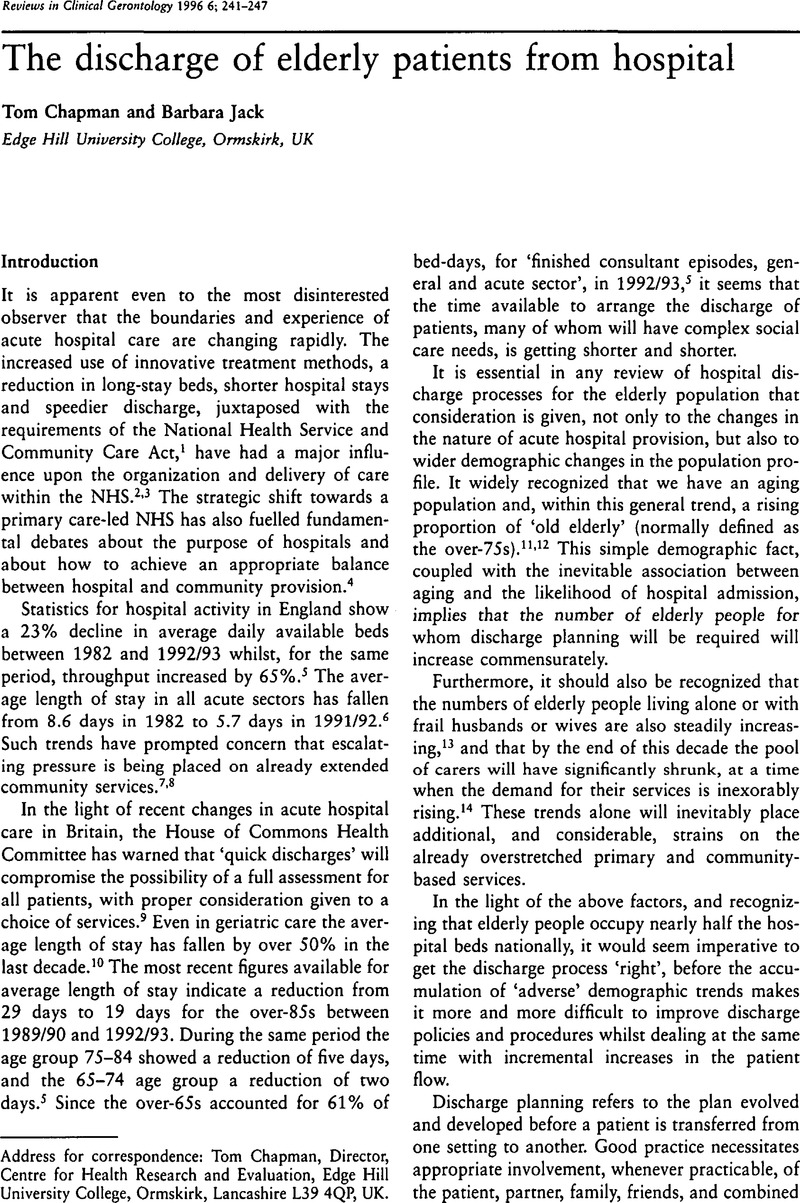Crossref Citations
This article has been cited by the following publications. This list is generated based on data provided by Crossref.
Roberts, Kathryn
2001.
Across the health-social care divide: elderly people as active users of health care and social care.
Health & Social Care in the Community,
Vol. 9,
Issue. 2,
p.
100.
Roberts, Kathryn
2002.
Exploring participation: older people on discharge from hospital.
Journal of Advanced Nursing,
Vol. 40,
Issue. 4,
p.
413.
OâBrien, Mary
and
Jack, Barbara
2009.
Barriers to dying at home: the impact of poor co-ordination of community service provision for patients with cancer.
Health & Social Care in the Community,





